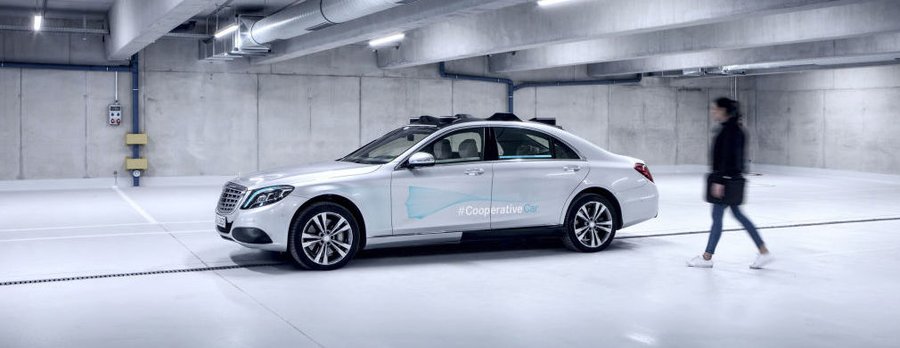Mercedes-Benz builds the communicative Cooperative Car

In an interesting societal twist, communication has recently reverted to simpler forms as technology has become more advanced. With the popularity of texting came a higher use of symbols via emojis and photos. Similarly, as complex autonomous vehicle technology research is at an all-time high, manufacturers have been forced to figure out a simple and basic mode of communication between the vehicles and pedestrians in surrounding environments. For Mercedes-Benz, a new prototype leans on lighting effects to alert the public of its intentions.
When the idea of autonomous vehicles started to gain steam, the main problem to solve was how a car would connect and communicate with the road and with other cars. But recently, auto companies have realized that was the easy, straightforward part. More complicated is the interaction between an autonomous vehicle and wildcard variables such as humans crossing a street. Detection is part of the solution, but not all.
Because of this, several manufacturers are exploring ways for the car to uniformly alert its surroundings what its intentions and next moves will be. Jaguar recently suggested displaying lines on the road showing where the car will go. Volvo is researching lights and sounds, and a smart concept had exterior screens to display messages. The Mercedes-Benz concept uses light pods and bars to indicate its status.
The Cooperative Car, which is based on an S-Class sedan, uses turquoise lighting for its signaling. The color choice comes from an in-house study that showed participants preferred the color, in addition to turquoise's absence in the automotive space overall.
The concept has lights in numerous places. In addition to the 360-degree pods on the roof, there are light displays in the windshield, radiator grille, the exterior mirrors, on the lower parts of windows, and in the headlamps. Mercedes-Benz hopes to use these to re-create the eye contact that humans normally make with the driver of a car when walking across its path.
The roof lights have three different stages for communication. A continuous light means the car is indeed in autonomous mode. Slow flashing lights indicate the car is braking, and pulsing lights means the car is about to move. A row of small light dots on the roof are meant to show recognition that the car sees obstacles in front of it. Mercedes-Benz is further researching the idea of turning the entire body into a digital communication medium.
For now, these concepts are all ideas, but they're further examples of how complicated the transition into autonomous vehicles will be. The forms of communication will need to be bulletproof when it comes to full understanding at the most basic levels in order to avoid any sort of legal trouble. In the video below, Mercedes-Benz discusses how design and technology must evolve to form trust with humans in order for autonomy to truly function to its fullest abilities.
Related News
